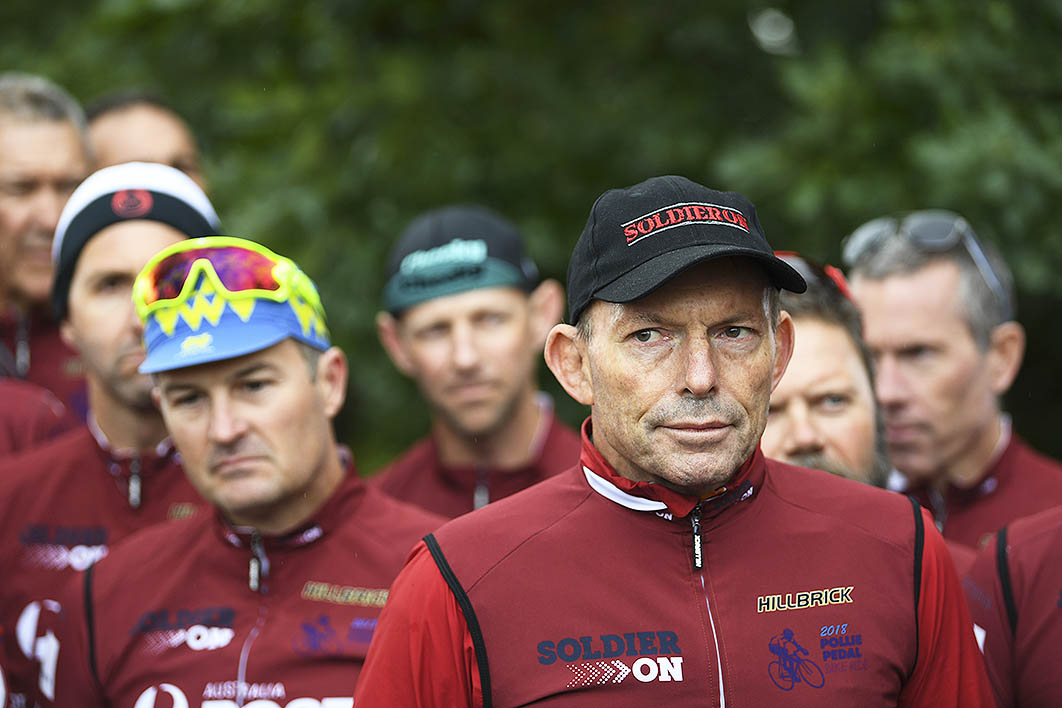Saturday’s Wentworth by-election result has veteran journalist Paul Kelly approaching boiling point. On Sunday the journalistic doyen told Sky News’s David Speers that the Liberal Party “is facing the prospect of a really significant election defeat, possibly the worst election defeat in the history of the Liberals.”
Back in July, a trifling 3.7 per cent two-party-preferred swing to the opposition in Longman was blown horrendously out of proportion, eventually leading to the toppling of prime minister Malcolm Turnbull. Now, maximum drama is being extracted from the Wentworth result by redefining the meaning of the word “swing.”
On the Australian Electoral Commission’s website the two-candidate-preferred swings to Liberal Dave Sharma and independent Kerryn Phelps are given as each candidate’s entire two-candidate-preferred vote. In the absence of a Liberal–independent count last time, in 2016, like can’t be compared with like. There was no actual swing between those two candidates on Saturday.
Yet that night the commentariat collectively redefined “swing” to mean the difference between the Liberal two-candidate-preferred votes in 2016 and 2018 (even though one contest was between Labor and a Liberal and one was between an independent and a Liberal). This produces a number around 19 per cent, which — and this is what got people excited — is even bigger than the swing in Canberra in 1995 (16.1 per cent) that portended the Keating government’s demolition the following year.
But this new “swing” is a meaningless number. (Eventually the AEC will calculate a Liberal–Labor two-party-preferred swing purely for interest’s sake.)
The electorates that independents and minor parties win tend to be ones considered “safe” for a major party — against the other major party. That describes the seats occupied by all the current crossbenchers, and it applies to other recent independents, including Tony Windsor and Rob Oakeshott. (Oakeshott’s 2008 win involved the largest of these pretend swings in the history of federal by-elections — and that was against the opposition.)
Wentworth is actually a bit different, because redistributions over the decades have made it less safe against Labor, a situation masked by Malcolm Turnbull’s high personal vote. This being a by-election, and hence potentially volatile, it might have fallen to the opposition if Phelps hadn’t run. But history gives her a much better chance of holding it at the next general election than Labor would have had.
Adding to the histrionics, this week the Australian published its latest consolidated Newspoll results, with large enough samples to give meaningful geographic and demographic data. In chunks, we’ve seen all these numbers before, but they’re reported as if they are yet more bad news for the Morrison government.
So what does the Wentworth result tell us about the next general election? Almost nothing. It certainly has no repercussions for the Coalition–Labor contest beyond what we already knew. Both parties sit in the miserable 30s; and Labor, with around 80 per cent of Greens preferences, sits comfortably ahead in the two-party-preferred stakes. The polls tell us Labor is likely to win.
But with support for major parties continuing its decline, the polls also tell us that we should expect, over time, a swelling crossbench.
The last time the House of Representatives boasted a crossbench this big was after the 1996 election. But only one of them, Peter Andren, had arrived there as a true insurgent. Three of the others — Allan Rocher, Graeme Campbell and Paul Filing — had held their seats under a major party’s banner, and then had been disendorsed or had quit. Pauline Hanson was a special case, unpreselected by the Liberals for a safe Labor seat, but elected anyway.
Today only Katter sits in the party turncoat category; the other four — Adam Bandt, Rebekha Sharkie, Andrew Wilkie and Cathy McGowan — took their seats from a standing start.
Under normal circumstances we might expect One Nation to contribute to that crossbench, and the Greens to contribute more, but the major parties are making this hard. Since 2013, the Liberals have been preferencing Labor ahead of the Greens. If, for example, 2016 Liberal how-to-vote cards had resembled those of 2010 (when Bandt was elected), the Greens would have won Batman (certainly) and Wills (probably).
On the other side, Labor always preferences against One Nation, and while that party wasn’t competitive in any electorate in 2016, it probably will be in some places next year, and there’s a good chance Labor’s cards will cruel its chances in one or several seats.
The Greens remain an outside chance in electorates like Higgins, where Liberal preferences won’t be distributed. One Nation could prevail in seats where Coalition preferences are distributed between One Nation and Labor.
But with the Centre Alliance looking like going nowhere (Rebekha Sharkie in Mayo aside), and in the absence of a Palmer United Party–style last-minute appearance from nowhere, independents look like being the most likely scene of possible action in 2019.
If you had to choose where one might pop up, you’d look for either a local MP who’s on the nose (hello Tony Abbott in Warringah) or a retiring MP. Cowper (where Nationals MP Luke Hartsuyker is pulling up stumps) could be interesting if Rob Oakeshott runs again.
Cowper is a very outside chance for Labor as well, especially if there’s a three-cornered contest, which can leak preferences.
And, of course, the larger the crossbench the greater the chance of a hung parliament. •





